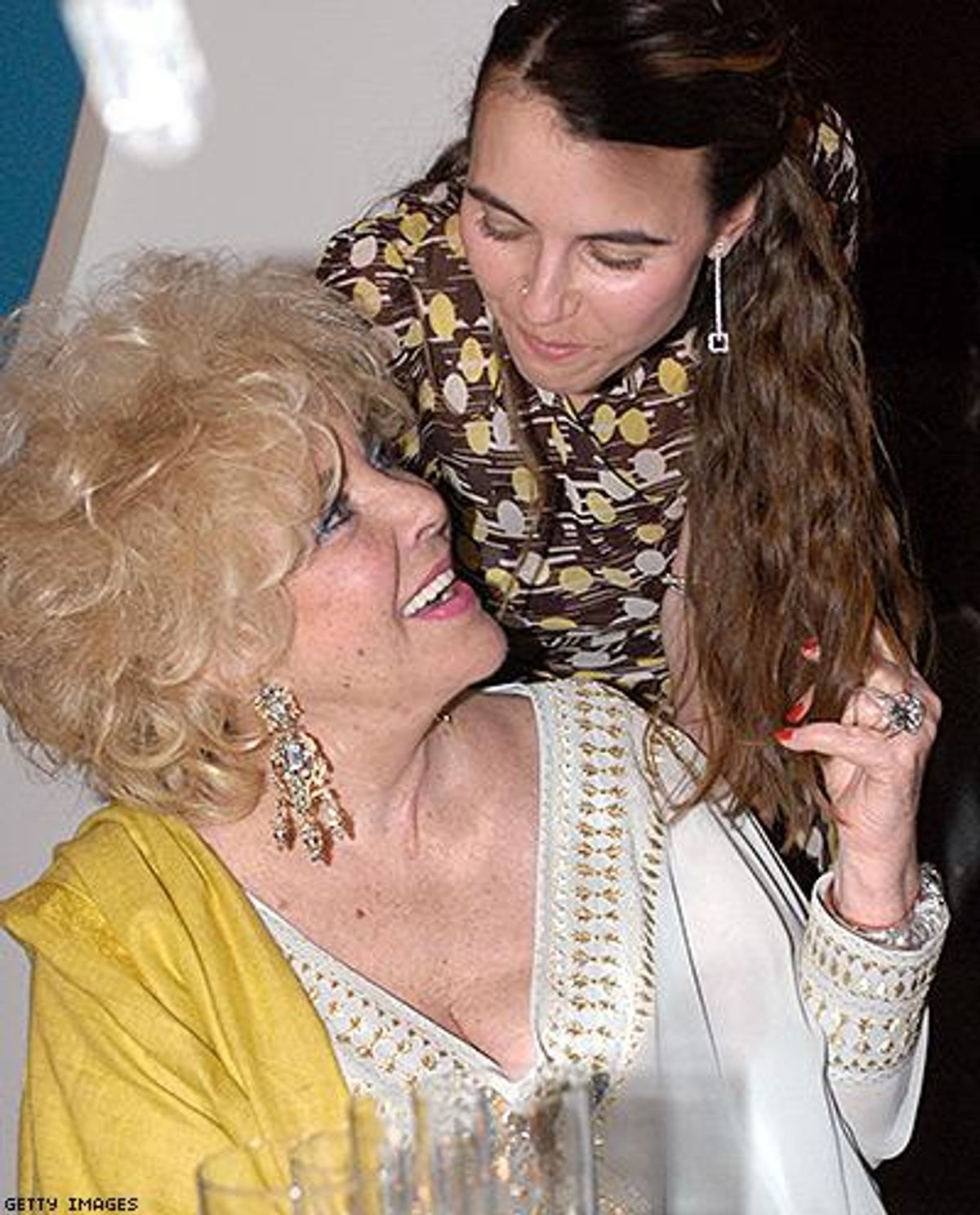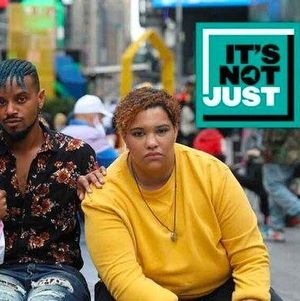The Hollywood starlet turned film legend left another legacy of equal importance: She founded or benefited a number of AIDS organizations, inspired generations of people with HIV, moved policy and politicians, and left behind a family tree of people who continue to work on HIV and AIDS causes. Here’s what she begot.
Organizations Taylor Founded
National AIDS Research Foundation: In Los Angeles in 1985, Taylor and Dr. Michael Gottlieb cofounded the National AIDS Research Foundation to research, find a cure and help people living with AIDS. At the same, Dr. Mathilde Krim established the AIDS Medical Research Foundation. These two merged to become…amfAR, cofounded by Krim and Gottlieb with Taylor as its international founding chairperson. With the success of amfAR and people with HIV beginning to live longer, Taylor established the Elizabeth Taylor AIDS Foundation in 1991 to focus specifically on funding organizations that cared for individuals with HIV or AIDS. Taylor sold her wedding photos to People for $1 million and used the money in its entirety to open the doors of ETAF. To date, more than 650 organizations in 33 countries have been helped through ETAF’s funding efforts.
Taylor’s Leadership Impacted These Groups
Taylor organized the first Hollywood fundraiser benefiting HIV and AIDS in September of 1985, for AIDS Project Los Angeles. Taylor called all her friends within the entertainment industry and was able to wrangle some the biggest names in Hollywood and elsewhere, including Madonna, Warren Beatty, and Betty Ford. In 1986, Taylor was honored at the group’s second Commitment to Life.
The ETAF provided its first major grant to Project Angel Food, a lifeline for those diagnosed with serious ailments. Taylor was a trustee until her death. In 2014, on the 25th anniversary of Project Angel Food, the organization presented Taylor’s former daughter-in-law, Aileen Getty, with the newly created Elizabeth Taylor Legacy Award.
The first AIDS organization in the state of Arizona, Arizona AIDS Trust got the Hollywood treatment in 1986 when Elizabeth Taylor brought Bob Hope to take part in its Gift of Life event. Arizona AIDS Trust board member Kirk Baxter recalls, “It brought Hollywood glamour to the Valley of the Sun and, more importantly, a renewed chance for life for so many.”
Visual AIDS created the now-ubiquitous red ribbon for the 1991 Tony Awards as a symbol of support and compassion for those living with HIV. Executive director Nelson Santos says, “When Elizabeth Taylor pinned one on, it became an internationally renowned symbol of AIDS awareness. Ms. Taylor was rarely seen without a red ribbon.”
Taylor attended the opening of the Elizabeth Taylor Medical Clinic at Whitman-Walker, established in her name, in Washington, D.C., in 1993. (The clinic currently provides free HIV testing and medical services.) In 2005, when the Elizabeth Taylor Endowment Fund was established for Clinical AIDS Research and Education at the University of California, Los Angeles (UCLA CARE Center), Taylor was there for the ribbon-cutting ceremony.
Playing a major role in the unfurling of the Names Project Quilt’s 1996 display in D.C., Taylor led a candlelight vigil and gave a rousing call to action on the steps of the Lincoln Memorial. For many Americans it was the first they had heard of the Quilt.
Taylor became the founding chair of Macy’s Passport in 1987 when the five-year-old event first expanded to Los Angeles. Passport began in 1982 as an awareness-raising fashion show in the Macy’s employee cafeteria. It has since grown into one of the largest and longest-running HIV fundraising events of its kind and, along with Macy’s Foundation, has donated more than $31 million to HIV and AIDS services, prevention, education, and research.
In the aftermath of Hurricane Katrina, ETAF created a mobile medical clinic to help people with HIV or AIDS receive proper care and medications. Impacted by the reverberations of the hurricane, Taylor recognized that in Third World countries, including many in Africa, poor access to health care is a reality daily, not just after a natural disaster. In 2008, Taylor reached out to the Global AIDS Interfaith Alliance to discuss a method to properly service locations in Africa with the greatest distance to health care and the highest prevalence of HIV and AIDS. As a result of the partnership, the Elizabeth Taylor Mobile Medical Clinics were created and have now become GAIA’s largest medical assistance program. Today, there are seven mobile clinics in Malawi, five of which are in the Mulanje region, where on weekdays no one has to walk more than an hour to get to proper health care. HIV has since decreased by 50 percent in that region.
A Family Tree of Philanthropy

Elizabeth Taylor, Kate Burton (Wikipedia); Rhys Tivey, Laela Wilding, Caleb Wilding (Getty Images), Chris Wilding, Naomi Wilding (Frazer Harrison); Eliza Carson (Getty Images); Aileen Getty (Mike Windle); Tarquin Wilding (Michael Kovac); Quinn Tivey (Alberto E. Rodriguez)
 At left: Elizabeth Taylor holds up a diamond mask for photographers at a fine jewelry auction April 13, 1992 to benefit the American Foundation for AIDS Research (AmFAR). The mask was valued at over one million USD.
At left: Elizabeth Taylor holds up a diamond mask for photographers at a fine jewelry auction April 13, 1992 to benefit the American Foundation for AIDS Research (AmFAR). The mask was valued at over one million USD.
The Taylor Timeline of Major Milestones
1986: Elizabeth Taylor testified before Congress on the need to fund emergency AIDS care, with legislation known as the Ryan White bill. Taylor returned to Congress in 1990 with Ryan’s mother, Jeanie White, to help pass a more comprehensive AIDS resources bill.
1987: Elizabeth Taylor made a personal plea to President Reagan to discuss HIV and AIDS in the public sphere, after he had been silent so long. She successfully persuaded him to finally give his first speech on the AIDS epidemic at a dinner honoring his surgeon general, C. Everett Koop, who also sent a pamphlet to every home dispelling the myths of AIDS, the first time a nationwide mailing was done in the U.S. to inform people about an epidemic. President Reagan declared, “There is no reason for those who carry the AIDS virus to wear a scarlet A.”
1987: Yet another unwavering moment in her fight against HIV and AIDS, Taylor spoke to the National Press Club and outwardly criticized laws that prohibited needle exchanges as “murder.” People were shocked to see a glamorous movie star take on this topic.
1992: Elizabeth Taylor stirred controversy when she posed for the cover of Vanity Fair holding a condom. Photographer Firooz Zahedi recalls, “When the editor at Vanity Fair requested that Elizabeth hold up a condom for the cover, I thought it may come across as tasteless and was sure that she would decline. I was wrong. Elizabeth was determined to do whatever it took to bring attention to the need to curb the spread of AIDS and promote safe sex. The final result is amazingly beautiful, classy and to the point.”
1993: Taylor created Cinema Against AIDS to fundraise for amfAR at the Cannes Film Festival, believing Cannes was the ideal location for a large global fundraiser. This annual event, which is still going strong, raised a record $35 million in 2014 alone.


 At left: Elizabeth Taylor holds up a diamond mask for photographers at a fine jewelry auction April 13, 1992 to benefit the American Foundation for AIDS Research (AmFAR). The mask was valued at over one million USD.
At left: Elizabeth Taylor holds up a diamond mask for photographers at a fine jewelry auction April 13, 1992 to benefit the American Foundation for AIDS Research (AmFAR). The mask was valued at over one million USD.















































































